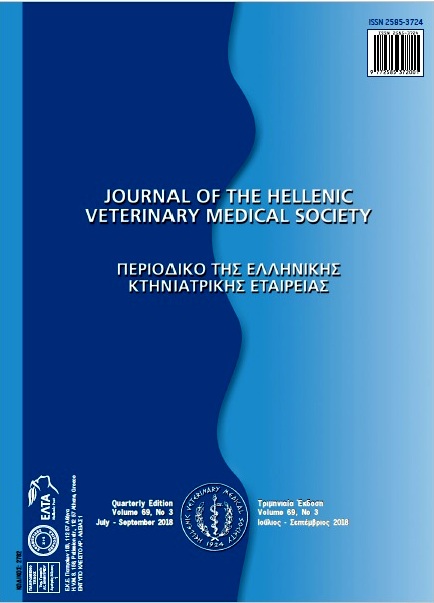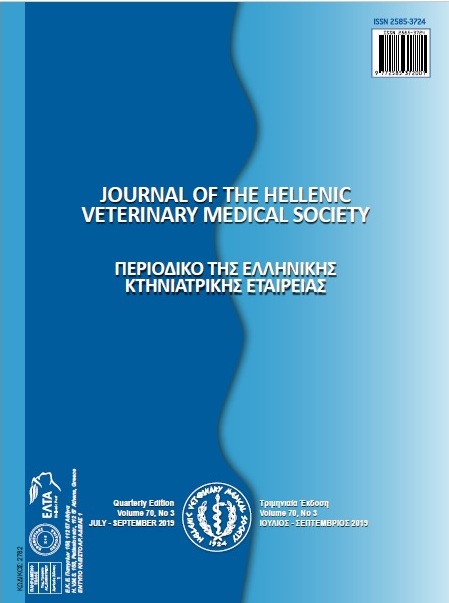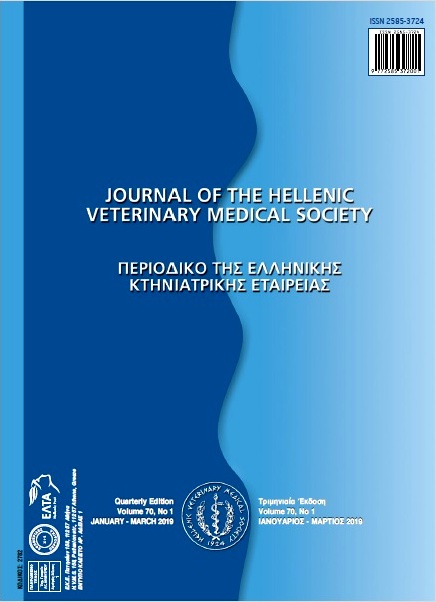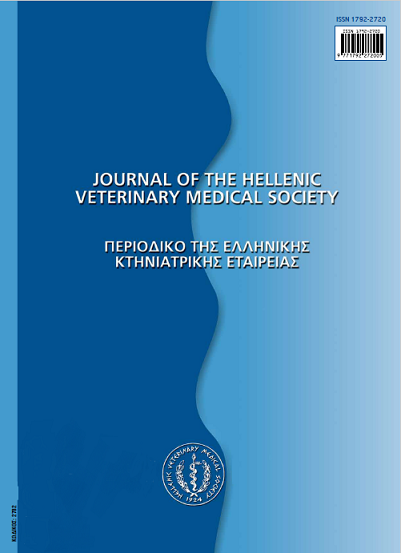Η κυτταρολογική εξέταση του επιπεφυκότα στον σκύλο και τη γάτα: δειγματοληψία, διαγνωστικές τεχνικές και ευρήματα

Περίληψη
Ο επιπεφυκότας λειτουργεί ως φυσικός και φυσιολογικός φραγμός έναντι μικροοργανισμών και ξένων σωμάτων, συμμετέχοντας ταυτόχρονα στην ανοσολογική άμυνα του οφθαλμού. Aποτελεί ένα εύκολα προσβάσιμο βιολογικό υλικό για δειγματοληψία και εξέταση. Η συλλογή του κυτταρολογικού υλικού συνιστάται σε παρουσία οφθαλμικού εκκρίματος, ερυθρότητας ή μάζας καθώς και σε πιθανή εντόπιση παθογόνων παραγόντων. Στις τεχνικές συλλογής, ανάλογα με τις εξετάσεις που θα ακολουθήσουν και τις πιθανές επιπλοκές, περιλαμβάνονται κυρίως τα ξέσματα, η παρακέντηση με λεπτή βελόνα, τα εντυπώματα και η λήψη ιστοτεμαχίου. Οι διαγνωστικές μέθοδοι που συνήθως εφαρμόζονται είναι η μικροσκοπική εξέταση του ληφθέντος κυτταρικού υλικού, η καλλιέργεια και το αντιβιόγραμμα, η δοκιμή απομόνωσης ιού, οι μοριακές τεχνικές (PCR), η δοκιμή άμεσου ανοσοφθορισμού για την ανίχνευση αντιγόνου καθώς και η ιστοπαθολογική εξέταση των ιστοτεμαχίων. Τα ευρήματα των εξετάσεων αυτών όπως η παρουσία φλεγμονικών, νεοπλασματικών ή άλλων μη τυπικών κυττάρων, ενδοκυτταρικών έγκλειστων αλλά και η ανίχνευση παθογόνων μικροοργανισμών, συνεισφέρουν στη διάγνωση όχι μόνο παθολογικών καταστάσεων του οφθαλμού αλλά και συστημικών νοσημάτων.
Λεπτομέρειες άρθρου
- Πώς να δημιουργήσετε Αναφορές
-
ATHANASIOU, L. V., PSEMMAS D. Ε., & PAPAIOANNOU, N. (2018). Η κυτταρολογική εξέταση του επιπεφυκότα στον σκύλο και τη γάτα: δειγματοληψία, διαγνωστικές τεχνικές και ευρήματα. Περιοδικό της Ελληνικής Κτηνιατρικής Εταιρείας, 69(1), 701–710. https://doi.org/10.12681/jhvms.16382
- Τεύχος
- Τόμ. 69 Αρ. 1 (2018)
- Ενότητα
- Review Articles

Αυτή η εργασία είναι αδειοδοτημένη υπό το CC Αναφορά Δημιουργού – Μη Εμπορική Χρήση 4.0.
Οι συγγραφείς των άρθρων που δημοσιεύονται στο περιοδικό διατηρούν τα δικαιώματα πνευματικής ιδιοκτησίας επί των άρθρων τους, δίνοντας στο περιοδικό το δικαίωμα της πρώτης δημοσίευσης.
Άρθρα που δημοσιεύονται στο περιοδικό διατίθενται με άδεια Creative Commons 4.0 Non Commercial και σύμφωνα με την άδεια μπορούν να χρησιμοποιούνται ελεύθερα, με αναφορά στο/στη συγγραφέα και στην πρώτη δημοσίευση για μη κερδοσκοπικούς σκοπούς.
Οι συγγραφείς μπορούν να καταθέσουν το άρθρο σε ιδρυματικό ή άλλο αποθετήριο ή/και να το δημοσιεύσουν σε άλλη έκδοση, με υποχρεωτική την αναφορά πρώτης δημοσίευσης στο J Hellenic Vet Med Soc
Οι συγγραφείς ενθαρρύνονται να καταθέσουν σε αποθετήριο ή να δημοσιεύσουν την εργασία τους στο διαδίκτυο πριν ή κατά τη διαδικασία υποβολής και αξιολόγησής της.







